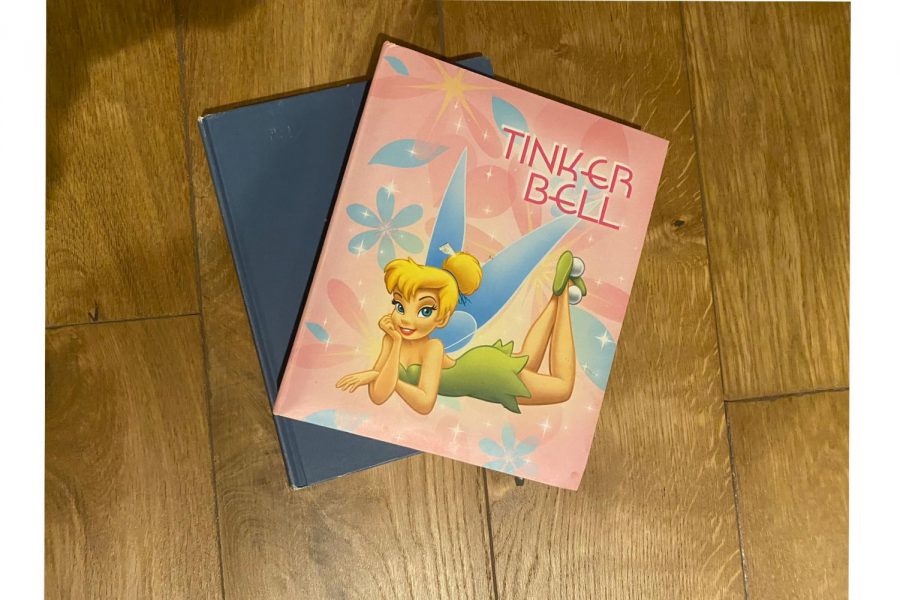Bippity boppity boo: Why we must offset fairytales’ harmful gender norms
Photo credit: Grace Doyle
From popular movies to classic books fairytales are a staple in many childhoods. However, looking deeper into the stories reveal another side of the lighthearted stories. Jon McBride, a BYU professor wrote for Phsy.org, “It is quite evident that the characterization of all these princesses follows similar stereotypical tropes and provides the children with the same understanding of gender roles that align with the society’s conventional ideas.”
May 7, 2021
From “Snow White” to “Sleeping Beauty,” fairy tales have been a huge part of many childhoods across the nation. It is typically a shared experience for young children to get lost in the wondrous and magical stories of fairytale magic. Unfortunately, however, this experience is joyous on the surface but underneath is saturated in sexist themes and misogynistic dialogue that further the polarization and exclusivity of gender norms.
Typical tropes found in the classics of “Cinderella” and “Sleeping Beauty”, such as the common theme of a “knight in shining armor”, enable young girls to feel as though they need to be saved by a man. The lack of agency among popular princesses fosters a feeling of helplessness if a girl doesn’t have a “prince” to solve her problems.
Dr. Victoria Showunmi, who lectures in gender studies at the University College London Institute of Education, noted the negative gender-based influence of these tropes within her lectures.
“This places a large amount of unnecessary stress onto both sexes and in particular women, as they believe that they should take up the Western traditional role of being a woman,” Showunmi said in an interview with Independent.
Because fairy tales target young children, no matter what, these ideologies of being a “damsel in distress” are deeply ingrained in young minds. It’s startling that as children are growing up, they are subconsciously receiving messages of their respective roles. It places pressure on young boys to do the saving and pressure on young girls to need to be saved. Even before kindergarten, children are already being made extremely aware of their place in society.
According to Shagun Gupta, a fiction enthusiast, “Male and female roles are presented differently in fairy tales, establishing distinct ideas about appropriate behavior for each gender, concurrently normalizing the existence of only two genders: male and female. Men are painted to be independent while women are rendered dependent on men; men are depicted as heroic saviors and women as damsels in distress.”
These ideas undoubtedly seep into the minds of young viewers, whose foundation of understanding will forever be affected. Social norms are continuously reinforced by the limited range of storylines regarding women. The princess handing over their lives to their saviors is just one of the many damaging themes that are frankly, overdone.
Suzzanah Weiss, a writer for Bustle wrote, “Fairy tales like ‘Cinderella’ and ‘Rapunzel’ end when a man saves a woman from her uneventful single life, which can encourage the girls hearing these stories to believe that the way to find happiness is to find and marry a high-status, conventionally attractive, masculine man, like the princes they’ve read about in stories or seen in movies.”
It’s important to acknowledge the subconscious messaging kids are receiving while watching their favorite prince or princess grace the screen. While fairytales are certainly not the only perpetrator of gendered expectations, they undeniably have a large role that establishes them in adolescence.
The reality is, that simply removing fairytales from childhood is not a foolproof solution. Instead providing a wide variety of stories, images and messaging will be most effective in a well-rounded understanding of the possibilities boys and girls have in terms of their “roles” in life.
“Children don’t have to completely disengage with princess culture—it’s not realistic to avoid the abundant princess movies, toys and branded merchandise.” Jon McBride, a BYU professor wrote for Phsy.org. “Instead, parents should foster a wide variety of interests and talk to their kids about media influences.”
For every fairytale, let’s tell kids real stories. Stories that show the diversity in the world. Stories that don’t limit possibilities. Stories that represent all that they can grow up to be.









